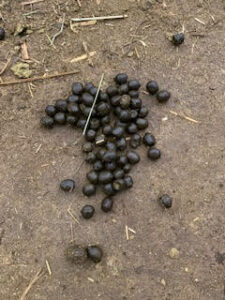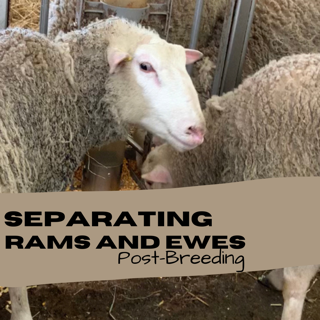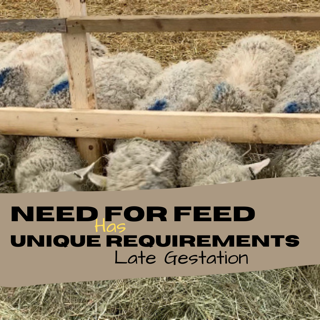How to Deworm Sheep Successfully and Treatment
How to deworm sheep successfully can be accomplished through assistance of your Vet. It’s key to develop the knowledge that symptoms exist and contacting your Vet as early as possible.
What are the symptoms of worms in Sheep?
Signs that occurred that caught our attention that something was wrong with some of our ewes began when we noticed that some of the flock’s stool became softer. It is usually dry! Shortly after weaning the lambs we noticed the body condition of the ewes began deteriorating, weight lose and lose of wool followed. We contacted our Vet and he did a sample test. The Vet’s recommendation was that we treat the whole flock in the barn with Ivomectin by drenching the ewes.

Sheep stool is ideally dry and appears like pellets as shown in this image.
If there is a change in appearance, something is wrong and action should be taken to learn what is happening.
Drenching
Refers to the process of delivering oral deworming medication. This is a fairly straightforward process, but you must be careful and thorough to avoid accidentally hurting the sheep.
How Much Medicine do I Administer
Our vet suggested that we administer Ivomec. Each drench is different, so you will need to read the package instructions that come with the drench to determine the proper dosage ration. Here is one example of a Sheep Deworming Chart to view. If unsure, check again with your vet.
.
Watch the Steps We Took Drenching and How We Deworm Sheep on Our Farm
We made a short video sharing how to deworm sheep successfully. We completed this task with 3 people without having a handling system. Once we collected a sample and our Vet had it analyzed, we drenched our flock because we had 4 ewes die quickly in a short time span. Once we drenched the flock, everything improved including their body condition.
What Worked For Us
One person straddled the ewe. Second person administered/drenched the medication. Third person marked the ewe to identify each ewe that had been treated.
COLLECTING STOOL SAMPLES
EQUIPMENT AND SUPPLIES:
- Ziploc or sealable sandwich bags
- Ice packs and styrofoam cooler if need to ship to lab
- Disposable gloves
- Sharpie black pen (for identifying samples)
- Form on which to record: date samples collected; from which group of animals; from which pasture; age of animals sampled; total number of individual samples collected
Source: Ontario Sheep
SAMPLE COLLECTION
- Collect 8-10g fecal samples (for lambs 10 to 15 fecal pellets and from adults, 6 to 8 fecal pellets) from each of 10 to 15 different animals that are representative of their group (e.g. nursing lambs; weaned lambs; pregnant ewes) or pasture.
- Don’t mix samples from different groups or pastures.
- The simplest way to collect samples is from the ground. Close the animals in a clean pen or crowd into a clean corner of the pasture, leave them for 15 minutes, release the group and then collect the feces from the ground.
- You can also purposely collect from specific animals.
- To be sure samples from the ground are fresh; they should be warm and moist. Old samples will give a false negative result as the eggs may have hatched and so won’t be visible under the microscope.
- You do not need to keep track of who shed the feces, but if you are interested in individual egg counts, you may do so.
Source: Ontario Sheep
SAMPLE SUBMISSION
Once you have collected the samples in separate Ziploc bags, place them in the Styrofoam boxes, put in the ice-packs, and fill in the records. Deliver the samples to your veterinary clinic while still chilled. If kept cool, the samples are good for a few days but room temperature will allow the eggs to hatch. Forcing as much air as possible out of the Ziploc bag and tightly sealing also helps prevent eggs from hatching. The samples can be processed either by your veterinarian or they may be sent to the Animal Health Laboratory, University of Guelph or other laboratories that offer this service (Ontario producers) for analysis via courier through your veterinarian. Although individual samples are collected, request that samples be “pooled” for analysis; one pooled result per group of animals (e.g. production group, pasture etc). Source: Ontario Sheep
Our Vet made this step simple for us. He instructed us to collect a sample first thing in the morning and drop off at the vet’s office. The tip was to AVOID doing on a Friday to avoid issues with sending out samples going into the weekend.
Why Do You Deworm Sheep
Internal parasites can be a major problem for sheep in Ontario. Effective control of internal parasites will make a large difference in the productivity and profitability of your flock. These organisms cause a range of problems including decreased growth of lambs, poor reproductive performance of ewes, and can kill animals if left unchecked.
Internal parasites of sheep include worms (e.g. roundworms, lungworms, etc.) and protozoa (e.g. coccidia) that live within the digestive and/or respiratory tract. Damage to the lining of the stomach and/or intestine can be severe enough to prevent nutrient absorption causing diarrhea and severe weight loss. Certain types of worms ingest blood, causing anaemia and weakening the animal.
Although there are a few notable exceptions, the life cycles of most internal parasites are somewhat similar. The adult organisms live and produce eggs in the stomach or intestines of the infected animal. The fertile eggs are passed with the manure and hatch outside the body. After a number of changes, a mobile infective larva is formed, attaches itself to vegetation, and may be eaten by a grazing sheep. The worm reaches sexual maturity after entering the stomach or intestine. The period from when the eggs are passed in the manure until the larvae have reached the infective stage is 3-4 weeks.
Animals most susceptible to parasites are lambs (immature immune system and limited exposure) and animals with weak immune systems (disease, poor nutrition, other stresses). Even though adult animals will be relatively immune, if they are not managed properly they can contaminate the environment increasing the likelihood that vulnerable animals will be infected. Implementing a well-planned parasite management program is a very important aspect of your flock health program. Source: Ontario Sheep
When to Deworm Sheep
One of the most important times to deworm is just after lambing, when there is a sudden release of infective eggs within the ewe’s intestinal tract. Treating animals at this time minimizes the exposure of larva to newborn and young lambs.
Examples of deworming schedules are (Consult with your veterinarian):
Ewes: Early lambing (January through February)
- Deworming ewes shortly after lambing will help to protect young lambs.
- Deworm ewes again before they go to pasture to prevent pasture contamination.
- If possible, deworm flock again 3 weeks after the have been on pasture
- Deworm ewes at weaning time
Ewes: Late Lambing (April through May)
- Deworm ewes in mid-winter (January, February) before the spring thaw, to prevent heavy contamination of pens or corrals during spring thaw
- Deworm ewes shortly after lambing (before sheep go to pasture) and at weaning time
Weaned lambs: • Deworm lambs at weaning time or before they enter feedlot or new pasture.
Replacements • Deworm all newly purchased stock when they arrive on farm at beginning of quarantine period and again 3 weeks later.
After deworming it is advisable keep animals in the same area for 12-24 hours, and then move them to a clean pasture or pen. Moving animals to a new pasture immediately after deworming will contaminate the pasture, as eggs will be passed with the dead worms. Animals will become re-infected sooner if they are put back into the original pasture. Source: Ontario Sheep
Resistance to dewormers:
Repeated use of the same dewormer can promote the development of strains of resistant parasites. This means that the dewormer will not be very effective and a large number of the worms will survive after treatment. These worms may pass their resistance to their offspring, creating a new line of resistant parasites. Resistance to dewormers is a growing problem for the sheep industry and as dewormers lose their effectiveness, there are fears that economic losses from parasites will increase.
Reducing the amount and the number of times medication is given will slow down the build up of resistant worms on the farm. The following strategies can help avoid this problem. Source: Ontario Sheep
Fecal Egg Counts:
This step is done by your vet and are important to determine the level and type of parasite infection. Fecal egg counts before and 10 days after the deworming also help ensure that the dewormer is effective. There should be a decrease of least 85 percent. Source: Ontario Sheep
Rotating De-wormers:
There are three main groups of wormers—benzimidazoles (e.g fenbenzadole); imidazothiazoles (e.g levamisole); and the avermectins (e.g ivermectin). Using a different family of wormer each year (for a full year) will help keep the parasite resistance down in your flock.
Performing yearly fecal samples will help to determine if resistance to a particular group of dewormers is occurring. Source: Ontario Sheep
Nutrition and Health Parasites are opportunists;
As long as the animal is healthy and well cared for, the parasite load will be minimal. However, a poor immune response in stressed or malnourished animals will give parasites a chance to thrive. Animals in this situation are doubly affected, as they must fight the parasite infection as well as the original problem.
A high parasite load is often a sign of other health problems, usually poor nutrition. Infected sheep provided good nutrition are, in some cases, able to reduce their worm load significantly. Source: Ontario Sheep
Sanitation
For sheep in confinement housing, cleanliness is the best defence against parasites. To help minimize fecal contamination, use feeders that prevent animals from walking on feed or pulling feed onto the ground. Locate waterers to prevent sheep from defecating in water and in areas with sufficient drainage. Pens, especially lamb pens, should be clean and dry. Source: Ontario Sheep
Genetic Resistance
Resistance to parasites has a strong genetic link, with certain sheep showing a greater resistance to infection than others. Being able to cull susceptible animals would be an ideal means of not only controlling parasitism, but also eliminating the problem completely. Source: Ontario Sheep
Summary
Parasites will thrive with:
- mild winter
- moist warm spring and summer
- overgrazed or permanent pastures
- marshy or wet pastures
Sheep are vulnerable when:
- very young or old
- poor immune status (stressful conditions, poor nutrition, weather, overcrowding)
- type and numbers of worms
Source: Ontario Sheep
Preventing parasite infestation in sheep
- strategic use of chemical dewormers
- manage pasture rotations to avoid pasturing young animals on fields recently housing older sheep
- avoid marshy or boggy pastures
- prevent overstocking of pasture, but keep grass reasonably well grazed
- break parasite life cycle (rest period, grazing with cattle etc.)
- maintain sanitary conditions in confinement housing
- discuss parasite control with your vet.
Source: Ontario Sheep





